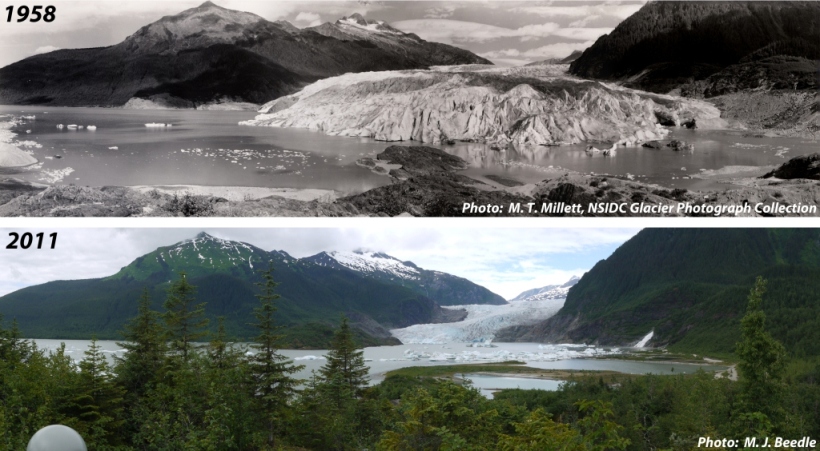I was fascinated by The Collapse of Western Civilization by Naomie Oreskes and Erik M. Conway. They included detail of such grandeur in a way that made me have to backtrack and figure out if the events they were describing were current or whether they were part of the future they had created and were writing from.For me, their approach of telling the human history of what I am currently living made it easy to picture the grandiose effects that the Anthropocene has already had on Earth. Climate change has become such a household phrase that it’s been normalized, and reduced to almost nothing. It makes sense that anthropogenic changes have become susceptible to reductionism because although we see the effects in the news, and we read and hear about the effects, if you live in urban areas, you don’t see them as easily.
At home in Alaska, I see the effects everywhere. As the hometown glacier recedes at an alarming rate, my backyard river rises higher and higher and the beach slowly disappears. Summer temperatures reach 80 degrees in a temperate rainforest known for its 54 degree average and sideways rain. Arctic sea ice melts and orcas migrate further and further north preying on resident whales and other creatures, altering the marine ecosystem. The local ski area formerly known for its fresh powder at low elevations struggles to reopen in recent winters due to lack of snow. I feel that the combination of statistics (present and future), perspicacious sea level maps, imagery and critical analysis of our current (their past) philosophies included in The Collapse of Western Civilization is an effective way to reopen the reader’s eyes to these irreversible effects of the Anthropocene even though most of the population would have to travel far to see it for themselves.
While reading Oreskes and Conway, I thought a lot about the other readings we’ve read and how authors imply that humans now have a control over the Earth’s systems, not the other way around. However the constant theme of underestimation in Oreskes and Conway’s text imply that humans have lost control of these systems. It’s as if we had control and realized it perhaps subconsciously, but couldn’t anticipate the snowball effect. And here we are now, in the future, learning about how naïve humans were (are) to think they can put a cap on an annual, anthropogenic, global temperature increase. They underestimated overpopulation, sea level rises, and solar radiation. People were displaced, populations wiped out, and land area reduced.
I compare this futuristic point of view to Utopian writing and find it so creative. The Collapse of Western Civilization made me think of Ecotopia, an ecologically perfect world in the San Francisco Bay Area by Ernest Callenbach in 1975. Callenbach writes with the same goal, to change the status quo, to warn humans of what’s to come and at the same time proposing solutions.
I think that insightful readings like these two pave the way for sustainable change and thinking. However, the unfortunate fact of the matter is a very small percentage of the population reads them.

Mendenhall Glacier – Juneau, Alaska